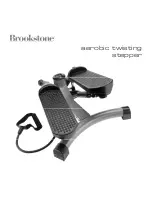
95
KX-FP365CX / KX-FM388CX
12.3.2.1.5. The unit can copy, but cannot either transmit/receive long distance or interna-
tional communications
The following two causes can be considered for this symptom.
Cause 1:
The other party is executing automatic dialing, the call has been received by this unit, and the CED or DIS signal response time is
too long. (In most cases, this unit detects the CNG signal and can respond to CED or DIS.) (According to the ITU-T standard, the
communication procedure is cancelled when there is no response from the other party within 35 sec, so that the other party
releases the line.)
(Cause and Countermeasure)
As shown in the chart above, the total handshaking time must be reduced, but because of the long distance connection and link-
ing of several stations, the line connection time cannot be reduced. Accordingly, the following countermeasures should be tried.
(A)... As the 35 sec. count is started directly after dialing or directly after the START button has been pressed for models with a
START button, the other party should be called manually, if possible. Another possibility is entering two pauses at the end of the
auto dial number on the transmission side. Then the count start time can be delayed for 2 pauses (about 10 sec.).
Cause 2:
Erroneous detection because of an echo or an echo canceler.
(Echo/Echo Canceler)
The signal from FAX1 reaches FAX2 via stations 1 and 2, but the reflection signal at station 2 also returns via station 1 (echo).
As the distance between station 1 and station 2 is far, the echo returns to FAX 1 at a max of 600 msec after transmission. There
is a possibility that this signal is detected erroneously as the signal from FAX2. For a normal call, there is also a possibility that
the echo of their own voice will make the call difficult to understand. For this reason, each station (station 1 and station 2)
attaches echo cancelers (S1 and S2) for international lines or long distance lines. For the echo canceler, the level of the trans-
mission signal from FAX 1 is compared with the level of the reception signal from FAX2. When the transmission signal is larger,
S1 is closed while S2 is opened when it is smaller. In other words, for transmission from FAX1, S1 is closed and S2 is open, so
that the echo does not return to FAX1.
Summary of Contents for KX-FM388CX
Page 12: ...12 KX FP365CX KX FM388CX 6 Technical Descriptions 6 1 Connection Diagram ...
Page 14: ...14 KX FP365CX KX FM388CX 6 2 1 General Block Diagram ...
Page 16: ...16 KX FP365CX KX FM388CX 6 3 2 Memory Map ...
Page 25: ...25 KX FP365CX KX FM388CX 6 4 2 Block Diagram ...
Page 27: ...27 KX FP365CX KX FM388CX ...
Page 78: ...78 KX FP365CX KX FM388CX Countermeasure ...
Page 79: ...79 KX FP365CX KX FM388CX REFERENCE Test Mode P 63 ...
Page 80: ...80 KX FP365CX KX FM388CX REFERENCE Test Mode P 63 ...
Page 81: ...81 KX FP365CX KX FM388CX REFERENCE Test Mode P 63 ...
Page 82: ...82 KX FP365CX KX FM388CX REFERENCE Test Mode P 63 ...
Page 83: ...83 KX FP365CX KX FM388CX ...
Page 84: ...84 KX FP365CX KX FM388CX ...
Page 85: ...85 KX FP365CX KX FM388CX REFERENCE Test Mode P 63 ...
Page 89: ...89 KX FP365CX KX FM388CX ...
Page 114: ...114 KX FP365CX KX FM388CX ...
Page 121: ...121 KX FP365CX KX FM388CX I O and Pin No Diagram ...
Page 124: ...124 KX FP365CX KX FM388CX 12 5 5 2 NG Example ...
Page 130: ...130 KX FP365CX KX FM388CX 12 5 8 2 Troubleshooting Flow Chart ...
Page 136: ...136 KX FP365CX KX FM388CX 12 5 12 Thermal Head Section Note Refer to Thermal Head P 26 ...
Page 139: ...139 KX FP365CX KX FM388CX 13 Service Fixture Tools ...
Page 142: ...142 KX FP365CX KX FM388CX 14 1 2 How to Remove the Thermal Head ...
Page 144: ...144 KX FP365CX KX FM388CX 14 2 2 How to Remove the Pickup Roller ...
Page 145: ...145 KX FP365CX KX FM388CX 14 2 3 How to Remove the Paper Exit Roller and Cassette Lever ...
Page 146: ...146 KX FP365CX KX FM388CX 14 3 Lower Cabinet Section 14 3 1 How to Remove the Bottom Frame ...
Page 147: ...147 KX FP365CX KX FM388CX 14 3 2 How to Remove the Digital Analog Interface and Sensor Boards ...
Page 148: ...149 KX FP365CX KX FM388CX 14 3 4 How to Remove the Gear Block and Separation Roller ...
Page 149: ...148 KX FP365CX KX FM388CX 14 3 3 How to Remove the Power Supply Board and AC cord ...
Page 150: ...150 KX FP365CX KX FM388CX 14 3 5 How to Remove the Component parts of Gear Block ...
Page 153: ...153 KX FP365CX KX FM388CX 14 4 3 How to Remove the Separation Rubber ...
Page 154: ...154 KX FP365CX KX FM388CX 14 5 Installation Position of the Lead Wires ...
Page 155: ...155 KX FP365CX KX FM388CX ...
Page 168: ...168 KX FP365CX KX FM388CX 16 1 4 Power Supply Board 16 1 5 Interface Board ...
Page 170: ...170 KX FP365CX KX FM388CX 16 3 Test Chart 16 3 1 ITU T No 1 Test chart ...
Page 171: ...171 KX FP365CX KX FM388CX 16 3 2 ITU T No 2 Test Chart ...
Page 172: ...172 KX FP365CX KX FM388CX 16 3 3 Test Chart ...
Page 173: ...173 KX FP365CX KX FM388CX Memo ...
Page 194: ...194 KX FP365CX KX FM388CX 20 1 2 Operation Cover Section ...
Page 195: ...195 KX FP365CX KX FM388CX 20 1 3 Back Cover Section ...
Page 196: ...196 KX FP365CX KX FM388CX ...
Page 197: ...197 KX FP365CX KX FM388CX 20 1 4 Upper Cabinet Section ...
Page 198: ...198 KX FP365CX KX FM388CX 20 1 5 Lower Cabinet Section ...
Page 199: ...199 KX FP365CX KX FM388CX 20 1 6 Gear Block Section 20 1 7 Screws ...
Page 200: ...200 KX FP365CX KX FM388CX 20 1 8 Accessories and Packing Materials ...
















































